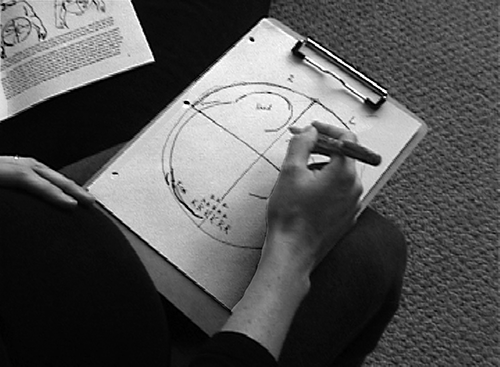
In my early days of attending breech births, I met a family I will forever be honored to have met. Their very experienced midwife helped them with a late in life baby and now they were having a second late in life baby to add to a large family. Because the baby was breech, they were planning a home birth. There were two reasons: a lack of vaginal breech options and the father had a very specific reason not to agree to the routine plan for breech babies to be born by the cesarean operation.
This wasn’t the father’s first breech baby. His first wife had their first child by cesarean due to the baby being in a breech position. Their second baby came along two years later born by repeat cesarean due to the previous cesarean, not because of the baby’s position, the pregnancy or the labor. A clot formed during the routine, second cesarean and entered the mother’s circulation. The clot lodged in a critical spot and in spite of immediate attempts to save her life, the mother died during the operation.
The labor of the second wife slowed and because the amniotic fluid had released, the lack of normal progress for the breech labor was good reason to transfer to the hospital. By the time we arrived in the hospital the baby had flipped! A head down baby was born vaginally later that day.
The topic of maternal morbidity due to policies around breech birth has ever been in my mind as a very real motivation to continue breech skills and a more open policy about first births and breech position.
Andrew Kotaska, MD, of Canada is concerned that “women have been coerced, both overtly and covertly, into having cesarean sections” for birth of their breech babies. Research warns doctors to expand options for vaginal breech birth. Parents and providers want to protect the baby but we must also protect the birth giver. Better skills in breech birth for term or late preterm babies are being met by doctors like Andrew Kotaska, and Anke Reitter and Frank Louwen of Germany.
Another study by Mehta finds that maternal morbidity was increased because of anesthesia and operative interference. I suspect interference may mean complications due to human error. Even in preterm breeches, in the next pregnancy, 1.1% (3/259) of women died with a planned caesarean section in their first pregnancy whereas 0.5% (6/1284) of women died if they had a planned vaginal delivery in the first pregnancy (aOR 1.8; 95% CI 0.31–10.1). The average risk of perinatal mortality over two pregnancies was 1.9% (10/518) for planned caesarean section and 2.0% (51/2568) for planned vaginal delivery, (OR 0.98; 95% CI 0.49–1.9).
Risk of death after cesarean section was 21.9 per 100.000 cesarean sections (86/393,443) versus 3.8 deaths per 100.000 vaginal births. Of course, for many women, having a cesarean is because they are already quite sick. Having a cesarean because a baby is breech and no other reason can cause women injury or even death, either at that time and in a future birth. So the choice around having a cesarean shouldn’t be decided without the knowledge that the birthing person’s life is at risk.
Breech position at the time of birth is a fact of life. We can’t hide from the risks by pushing all parents to surgical birth. Some breech babies can be born relatively safely by natural means when the provider knows simple methods of freeing trapped arms or heads. See our Breech Birth Guide for examples of methods and solutions. Cesareans will always be a safe choice for some breech births. But vaginal breech birth is a safe choice for many babies and birth givers as well.
References:
Kallianidis, A. F., Schutte, J. M., van Roosmalen, J., & van den Akker, T. (2018). Maternal mortality after cesarean section in the Netherlands. European Journal of Obstetrics & Gynecology and Reproductive Biology, 229, 148-152.
Bergenhenegouwen, L., Ensing, S., Ravelli, A. C., Schaaf, J., Kok, M., & Mol, B. W. (2016). Subsequent pregnancy outcome after preterm breech delivery, a population based cohort study. The Journal of Maternal-Fetal & Neonatal Medicine, 29(15), 2539-2543.
Mehta, S., Chauhan, J., Raval, B., Yadava, P., & Lilhare, V. (2017). Study of Feto-Maternaloutcome of Breech Presentation With Singelton Pregnancy At Tertiary Care Hospital. National Journal of Integrated Research in Medicine, 8(6).
[tribe_events_list limit=”4″]